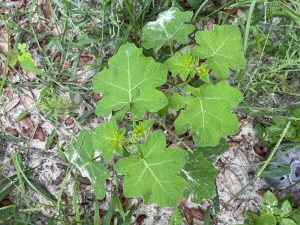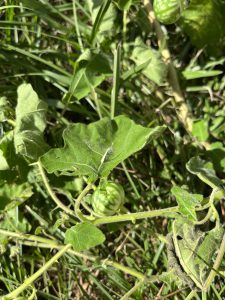
Fall is known for pumpkin picking, cooler weather, and trick-or-treating. While we are enjoying our yards in this cooler, drier weather, it is a good time to look for something truly spooky that may be lurking amongst the bushes: invasive weeds!
For this first week of October, we’re introducing you to a frighteningly spiny, nasty weed – tropical soda apple. While the fruit looks more like small watermelons than apples, they are not edible. It is more common and problematic in pastures than residential yards, but I discovered it on our property a few months ago and have been carefully pulling it up ever since. Seeds can be carried over on contaminated tractor and mowing equipment and we are quite certain this is how it was introduced to our property while it was being cleared. More than 1 million acres of pastureland are known to be infested with this invasive weed. While livestock don’t like the spiny foliage, cattle and wildlife do eat the fruit spreading the weed to new haunts.
The fruit can appear year-round but are most prevalent between September and May. One fruit can contain 200-400 seeds! Catching and removing this weed before it goes to fruit is very important to stopping its spread.

Tropical soda apple likes wet soil so avoiding over-watering can help keep it from haunting your yard. Mowing it regularly will also keep it from flowering and fruiting. Wear gloves when hand pulling or even picking this weed up. Not only are there sharp spines on the stems, but on the leaves and down close to the roots too!
For more information on this spooky weed and how to control it, contact your UF/IFAS Extension Service or visit Tropical Soda Apple: Biology, Ecology, and Management of a Noxious Weed in Florida.
Happy Halloweeding!



